mmcartalk
Expert
- Messages
- 4,155
- Reactions
- 2,675
MM Retro Write-Up: 1971-73 Ford Pinto

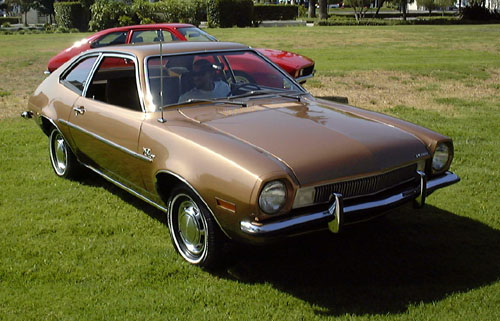
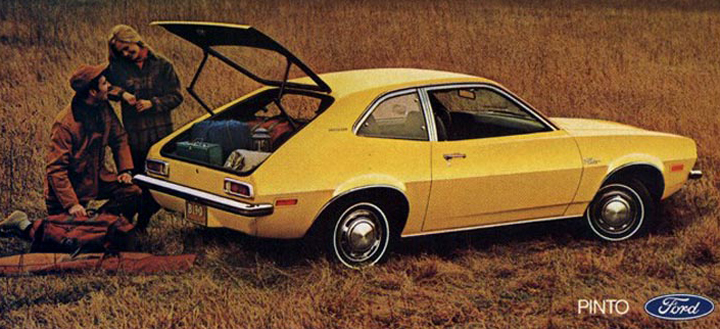
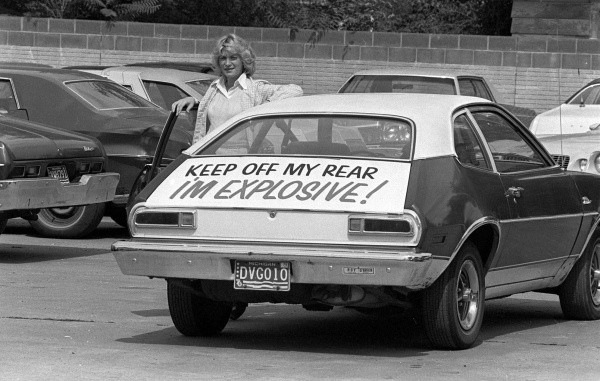

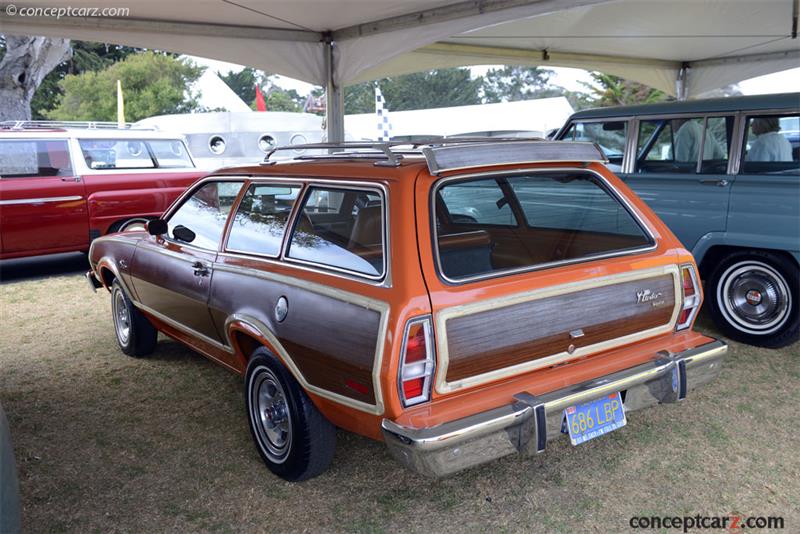
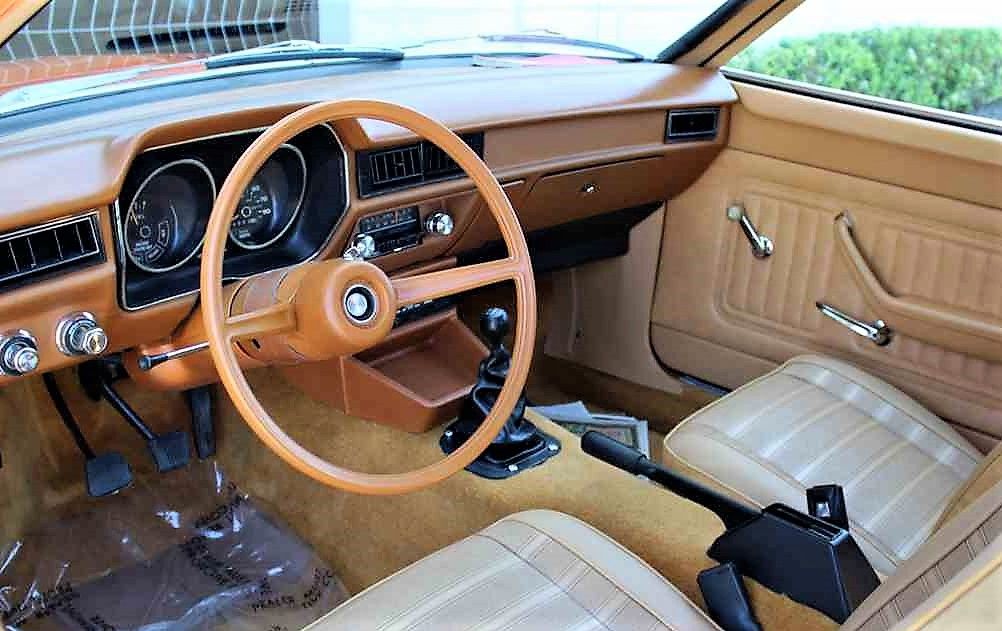
IN A NUTSHELL: A classic example of mismanagement and its consequences.
By the 1960s, and particularly by the late 1960s, full-size cars in the American market had reached gigantic proportions (some of them almost 20 feet long), and the increasing cost of running and maintaining them was becoming a national issue. Gas prices had been steady for a long time, but, as inflation set in during this period, the price of gas started creeping up, and, of course, would explode in the next decade from world events and the rise of OPEC (Organization of petroleum Exporting Countries).
Detroit’s Big Three (Ford/GM/Chrysler), though each delivering a line of compact cars, never really put that much attention into them other doing a couple of muscle-versions with V8s, simply because, particularly with the Plain-Jane versions, there just wasn’t much sales-profit in them. And one of them…the first-generation Chevy Corvair (see my Corvair write-up), had a number of quirks and even dangerous characteristics that injured or killed people.
The steadily-increasing sales of the VW Beetle in the mid-late 1960s, however (see my Beetle write-up) finally convinced Ford and GM that it was time to market domestic subcompacts of their own. AMC also started work on one (although it was to end up being simply a compact Hornet with the rear end chopped off)…what had been the predecessor off. AMC, in the mid-1950s, had tried to market the subcompact Metropolitan, but it had been a clear sales flop
Chrysler, however, more strapped for funds than the other companies (and facing quality-control problems on its existing vehicles), decided to gamble that larger vehicles would make another comeback…..and would not have a domestic subcompact of its own until the late 1970s…..ironically, with VW-supplied engines.
So, by the fall of 1970, for the first time in history, three new domestic subcompacts, in time for the new 1971 model year, were ready (or supposedly ready) to be launched….the Ford Pinto, Chevrolet Vega, and AMC Gremlin. I say “supposedly” ready, because, in fact, all three, but particularly the Pinto and Vega, had significant issues and improper design, though the Gremlin somewhat less-so than the other two, since it had followed the introduction of the successful compact-sized Hornet a year earlier.
Although the hot-selling VW Beetle, of course, was air-cooled and rear-engined, the domestic automakers chose not to go that route with their own subcompacts, first, probably, because of the added costs of a major platform revision from their existing products (all were Front-Engine/RWD or 4WD, except for the FWD Olds Toronado and Cadillac Eldorado, and, Second, because the problems of the early air-cooled/rear-engined Corvairs were still fresh on everyone’s mind. Instead, the Pinto and Vega (and to a lesser-extent, the Gremlin) would end up as simple, cheaply-done downsized versions of their existing larger RWD platforms. The Vega, though, also attempted to market an aluminum-block in-line four which, along with severe body-rust, made it a reliability-disaster….more on that in a separate write-up. For purposes of this write-up, however, I’ll concentrate on the Ford Pinto, which was arguably the most hazardous of the three to ride in.
The Pinto, unlike the other two, also had to survive the well-known arrogance of Henry Ford II…he wasn’t called “King Henry” and his company a “Fiefdom” for nothing. I don’t have time to go into the details here of how he ran the company……for reference, I recommend Lee Iacocca’s book “Iacocca”. The initial goal of the Pinto’s design had been to give it a curb weight (no persons or cargo aboard, but with full fuel/oil) of 2000 lbs. or less, to make it easier on the small. Very lightweight (for the period) sheet-metal and trim/interior materials/hardware were used, in order to keep the weight down and make it easier for the 1.6L in-line four and its 75 HP / 96 ft-lbs. of torque. Initially, only two-door sedans with separate trunks were offered…several months later, a two-hatchback, and, in 1974, 3-door Wagons and a Mercury Bobcat version. The Pinto used a ladder-frame design and a separate bolted-on-body, and, when the initial prototype was finished, it was found to be a few pounds over the 2000-lb. limit management was demanding. To achieve the desired weight, management said to remove part of the rearmost section of the frame, without a corresponding redesign of the fuel-tank and its location, which would be deemed too costly. The rearmost frame-bracing, behind the fuel tank and live-axle, provided at least some protection for it in rear-impacts…the project’s engineers argued that modifying it would not only compromise the design, but incur a major fire and liability-risk. Management did a quick economic study, determined that the number of projected liability-payouts from accidents would not exceed the cost of a major redesign of the car’s rear-end, and ordered the existing design into production without the added protection of the rear bracing and live-axle location.
The rest of the story, of course, and the grim record of early model Pintos in accidents is well-known. Unsuspecting buyers began to buy and drive these cars……..one more reason why it is important to know just what you are get when you sign on the dotted line for a vehicle. One quick look under the rear bumper (or, for what passed for a bumper in those pre-regulation days) would have been a tip-off to this vehicle’s poor design…but the average person, particularly non-engineers, doesn’t examine every nut and bolt on a new vehicle….nor is it necessarily their job to. One should be able to get a new vehicle with the expectation of it being safe under reasonable conditions….even smaller vehicles, although back then, all else equal, larger usually meant better in the area of safety. As these cars started going up like Roman Candles in even just moderate rear-end impacts, Consumer Reports, Ralph Nader, the NHTSA/DOT, Justice Department, and other organizations began to get involved, and Ford eventually wound up in court, under criminal charges, having to defend its actions. Actual results of the trials were mixed, but, for the first time, a major auto manufacturer, unlike ten years previously with GM and the early Corvairs, had to answer for negligence of design in court….even over and above what Ford’s managers had figured in their rejection of the vehicle’s redesign because of cost. It would, of course, not be the last time automakers would be prosecuted, as the future would show.
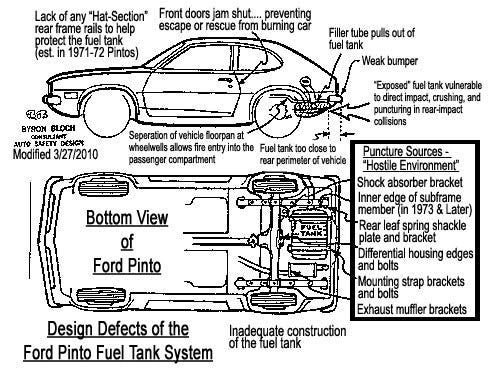
So much for the legalities. As for the car itself, it was little more than base transportation at a low price. Compared to the behemoths that Detroit had been building for the better part of two decades, the Pinto felt and drove like a tin can, though I’d say its sheet metal is probably thicker than much of what is on new vehicles today. But the weight-demands clearly showed. The seats were thin and rather flimsy. Shut the door, and you got a clink-sound instead of a solid Thunk. The doors tended to droop slightly when fully-open from the lightweight hinges. The thin glass/sheet metal and lack of insulation made for a rather noisy ride. Driver/passenger-amenities were lacking. Engine power was adequate for most normal suburban driving, but the base 4-speed manual transmission had rather vague linkage, and the optional 3-speed automatic simply took too much power out of the small engine. Worse, the general design served as the basic platform for the upcoming 1974 Mustang II, which was one of the lowest points in the history of American muscle cars.
But the car did have some good points. Like the Vega, the Pinto allowed buyers who wanted get a new subcompact and save gas-money to Buy American…..….the AMC Gremlin didn’t save that much gas, because it relied on an in-line six (and, in a muscle-version, even an optional 5.0L V8). Also like the Vega, the Pinto was maneuverable, easy to park and fit into small spaces…again, the Gremlin, despite its small size, wasn’t that maneuverable because of the heavy engines up front, slow steering-gear, and requirement for a lot of steering-wheel-input to get response. And, with the hatchback, the Pinto was reasonably space-efficient inside for a small two-door RWD design…the wagon, even more so when it debuted.
I never owned a Pinto myself, but sampled some, a friend in college had one (we took some rides in it) and serviced some at my first gas-station job out of high school. Fortunately, my college-friend’s Pinto never got hit…particularly in the rear….and, at the time he got it in 1971 or 1972 (I can’t remember if he bought it himself or his parents did and gave it to him) the full extent of the vehicle’s shortcomings were not yet known.
Looking back on these early-70s subcompacts, perhaps (?) Chrysler made atlas partly the right decision by waiting for 7 more years to introduce its own Plymouth Horizon/Dodge Omni subcompacts, although they had to use VW-supplied engines for them at first. Even though they were poorly-built and had a lot of quality-control problems (see my Horizon write-up….me and my family owned two of them), still, design-wise, they were head and shoulders above anything any other American company, up to then, had offered in that size. The classic two-box design meant a LOT of space-efficiency, and the FWD and transverse-engine winter traction. Optional Interior trim-packages offered a downsized vision of true American-style plushness inside for the seating/trim, and an also-optional outside trim package loaded it up with chrome. And, of course, all these vehicles served as building-blocks and design-experience for the inevitable downsizing that would occur as the result of the world changing and cheap gas no longer being taken for granted. The experience learned in the downsizing of these vehicles helped in the downsizing of future designs.
And, as Always, Happy Car-Memories.

MM
__________________

DRIVING IS BELIEVING








IN A NUTSHELL: A classic example of mismanagement and its consequences.
By the 1960s, and particularly by the late 1960s, full-size cars in the American market had reached gigantic proportions (some of them almost 20 feet long), and the increasing cost of running and maintaining them was becoming a national issue. Gas prices had been steady for a long time, but, as inflation set in during this period, the price of gas started creeping up, and, of course, would explode in the next decade from world events and the rise of OPEC (Organization of petroleum Exporting Countries).
Detroit’s Big Three (Ford/GM/Chrysler), though each delivering a line of compact cars, never really put that much attention into them other doing a couple of muscle-versions with V8s, simply because, particularly with the Plain-Jane versions, there just wasn’t much sales-profit in them. And one of them…the first-generation Chevy Corvair (see my Corvair write-up), had a number of quirks and even dangerous characteristics that injured or killed people.
The steadily-increasing sales of the VW Beetle in the mid-late 1960s, however (see my Beetle write-up) finally convinced Ford and GM that it was time to market domestic subcompacts of their own. AMC also started work on one (although it was to end up being simply a compact Hornet with the rear end chopped off)…what had been the predecessor off. AMC, in the mid-1950s, had tried to market the subcompact Metropolitan, but it had been a clear sales flop
Chrysler, however, more strapped for funds than the other companies (and facing quality-control problems on its existing vehicles), decided to gamble that larger vehicles would make another comeback…..and would not have a domestic subcompact of its own until the late 1970s…..ironically, with VW-supplied engines.
So, by the fall of 1970, for the first time in history, three new domestic subcompacts, in time for the new 1971 model year, were ready (or supposedly ready) to be launched….the Ford Pinto, Chevrolet Vega, and AMC Gremlin. I say “supposedly” ready, because, in fact, all three, but particularly the Pinto and Vega, had significant issues and improper design, though the Gremlin somewhat less-so than the other two, since it had followed the introduction of the successful compact-sized Hornet a year earlier.
Although the hot-selling VW Beetle, of course, was air-cooled and rear-engined, the domestic automakers chose not to go that route with their own subcompacts, first, probably, because of the added costs of a major platform revision from their existing products (all were Front-Engine/RWD or 4WD, except for the FWD Olds Toronado and Cadillac Eldorado, and, Second, because the problems of the early air-cooled/rear-engined Corvairs were still fresh on everyone’s mind. Instead, the Pinto and Vega (and to a lesser-extent, the Gremlin) would end up as simple, cheaply-done downsized versions of their existing larger RWD platforms. The Vega, though, also attempted to market an aluminum-block in-line four which, along with severe body-rust, made it a reliability-disaster….more on that in a separate write-up. For purposes of this write-up, however, I’ll concentrate on the Ford Pinto, which was arguably the most hazardous of the three to ride in.
The Pinto, unlike the other two, also had to survive the well-known arrogance of Henry Ford II…he wasn’t called “King Henry” and his company a “Fiefdom” for nothing. I don’t have time to go into the details here of how he ran the company……for reference, I recommend Lee Iacocca’s book “Iacocca”. The initial goal of the Pinto’s design had been to give it a curb weight (no persons or cargo aboard, but with full fuel/oil) of 2000 lbs. or less, to make it easier on the small. Very lightweight (for the period) sheet-metal and trim/interior materials/hardware were used, in order to keep the weight down and make it easier for the 1.6L in-line four and its 75 HP / 96 ft-lbs. of torque. Initially, only two-door sedans with separate trunks were offered…several months later, a two-hatchback, and, in 1974, 3-door Wagons and a Mercury Bobcat version. The Pinto used a ladder-frame design and a separate bolted-on-body, and, when the initial prototype was finished, it was found to be a few pounds over the 2000-lb. limit management was demanding. To achieve the desired weight, management said to remove part of the rearmost section of the frame, without a corresponding redesign of the fuel-tank and its location, which would be deemed too costly. The rearmost frame-bracing, behind the fuel tank and live-axle, provided at least some protection for it in rear-impacts…the project’s engineers argued that modifying it would not only compromise the design, but incur a major fire and liability-risk. Management did a quick economic study, determined that the number of projected liability-payouts from accidents would not exceed the cost of a major redesign of the car’s rear-end, and ordered the existing design into production without the added protection of the rear bracing and live-axle location.
The rest of the story, of course, and the grim record of early model Pintos in accidents is well-known. Unsuspecting buyers began to buy and drive these cars……..one more reason why it is important to know just what you are get when you sign on the dotted line for a vehicle. One quick look under the rear bumper (or, for what passed for a bumper in those pre-regulation days) would have been a tip-off to this vehicle’s poor design…but the average person, particularly non-engineers, doesn’t examine every nut and bolt on a new vehicle….nor is it necessarily their job to. One should be able to get a new vehicle with the expectation of it being safe under reasonable conditions….even smaller vehicles, although back then, all else equal, larger usually meant better in the area of safety. As these cars started going up like Roman Candles in even just moderate rear-end impacts, Consumer Reports, Ralph Nader, the NHTSA/DOT, Justice Department, and other organizations began to get involved, and Ford eventually wound up in court, under criminal charges, having to defend its actions. Actual results of the trials were mixed, but, for the first time, a major auto manufacturer, unlike ten years previously with GM and the early Corvairs, had to answer for negligence of design in court….even over and above what Ford’s managers had figured in their rejection of the vehicle’s redesign because of cost. It would, of course, not be the last time automakers would be prosecuted, as the future would show.

So much for the legalities. As for the car itself, it was little more than base transportation at a low price. Compared to the behemoths that Detroit had been building for the better part of two decades, the Pinto felt and drove like a tin can, though I’d say its sheet metal is probably thicker than much of what is on new vehicles today. But the weight-demands clearly showed. The seats were thin and rather flimsy. Shut the door, and you got a clink-sound instead of a solid Thunk. The doors tended to droop slightly when fully-open from the lightweight hinges. The thin glass/sheet metal and lack of insulation made for a rather noisy ride. Driver/passenger-amenities were lacking. Engine power was adequate for most normal suburban driving, but the base 4-speed manual transmission had rather vague linkage, and the optional 3-speed automatic simply took too much power out of the small engine. Worse, the general design served as the basic platform for the upcoming 1974 Mustang II, which was one of the lowest points in the history of American muscle cars.
But the car did have some good points. Like the Vega, the Pinto allowed buyers who wanted get a new subcompact and save gas-money to Buy American…..….the AMC Gremlin didn’t save that much gas, because it relied on an in-line six (and, in a muscle-version, even an optional 5.0L V8). Also like the Vega, the Pinto was maneuverable, easy to park and fit into small spaces…again, the Gremlin, despite its small size, wasn’t that maneuverable because of the heavy engines up front, slow steering-gear, and requirement for a lot of steering-wheel-input to get response. And, with the hatchback, the Pinto was reasonably space-efficient inside for a small two-door RWD design…the wagon, even more so when it debuted.
I never owned a Pinto myself, but sampled some, a friend in college had one (we took some rides in it) and serviced some at my first gas-station job out of high school. Fortunately, my college-friend’s Pinto never got hit…particularly in the rear….and, at the time he got it in 1971 or 1972 (I can’t remember if he bought it himself or his parents did and gave it to him) the full extent of the vehicle’s shortcomings were not yet known.
Looking back on these early-70s subcompacts, perhaps (?) Chrysler made atlas partly the right decision by waiting for 7 more years to introduce its own Plymouth Horizon/Dodge Omni subcompacts, although they had to use VW-supplied engines for them at first. Even though they were poorly-built and had a lot of quality-control problems (see my Horizon write-up….me and my family owned two of them), still, design-wise, they were head and shoulders above anything any other American company, up to then, had offered in that size. The classic two-box design meant a LOT of space-efficiency, and the FWD and transverse-engine winter traction. Optional Interior trim-packages offered a downsized vision of true American-style plushness inside for the seating/trim, and an also-optional outside trim package loaded it up with chrome. And, of course, all these vehicles served as building-blocks and design-experience for the inevitable downsizing that would occur as the result of the world changing and cheap gas no longer being taken for granted. The experience learned in the downsizing of these vehicles helped in the downsizing of future designs.
And, as Always, Happy Car-Memories.

MM
__________________

DRIVING IS BELIEVING

